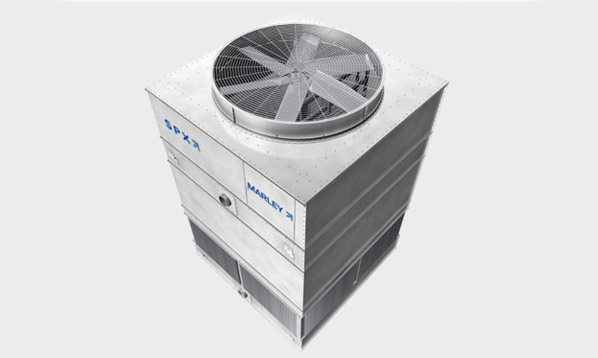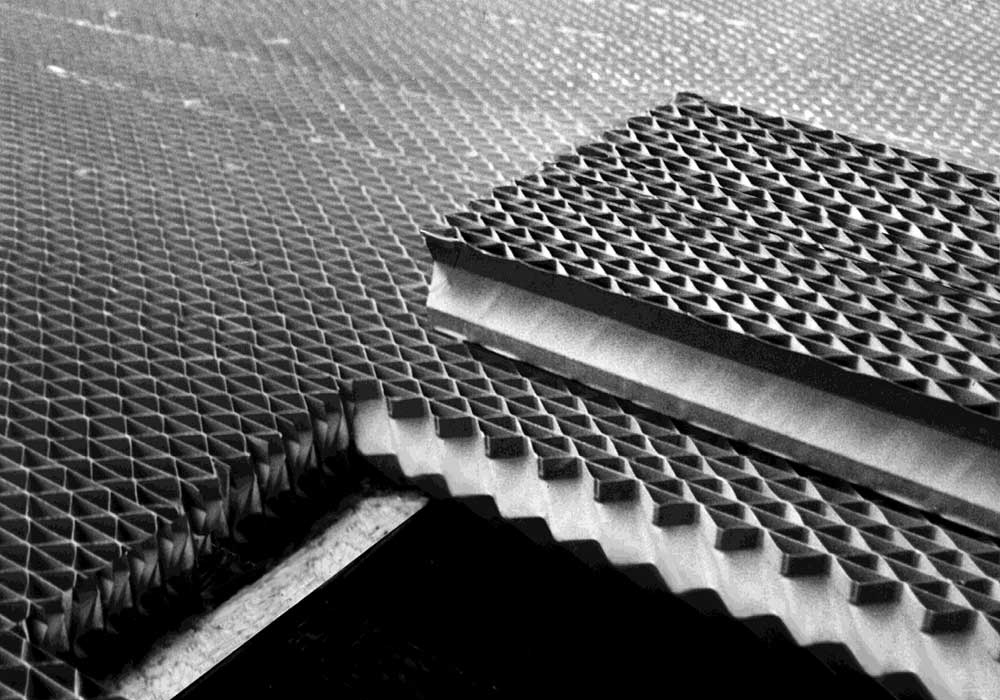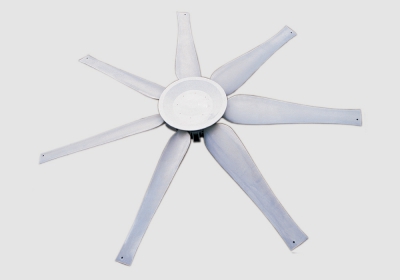什么是蒸发冷却?
牛津英语词典定义 蒸发冷却 定义为“液体蒸发导致的温度降低,蒸发会带走蒸发表面的潜热。这一过程用于工业和家用制冷系统,也是出汗的物理基础。”
除了出汗之外,蒸发冷却也是游泳或热水淋浴后产生冷却效果的过程。 蒸发式冷却塔 利用蒸发冷却的自然力量来降低工业过程和商业 HVAC 舒适冷却系统中使用的水的温度。
什么是蒸发冷却塔?
一个 冷却塔 是一种特殊的热交换器,空气和水直接接触,以降低水温。当这种情况发生时,少量的水 蒸发,降低流经塔的水的温度。
水经工业过程或暖通空调系统冷凝器加热的冷水,通过管道泵入冷却塔。进入冷却塔的水通过 喷嘴 到称为“充满”,从而减缓了水流过冷却塔的速度,并为水的扩散创造了更大的表面积,从而最大限度地增加了空气与水的接触面积。当水流过冷却塔时,它会暴露在由一个 电动风扇.
当水和空气相遇时,少量的水会蒸发,形成 蒸发冷却 作用。然后,冷却后的水被泵送回 HVAC 冷凝器或工业过程设备,在那里再次吸收热量,然后以连续循环的方式返回冷却塔。
资源:
点播网络研讨会
冷却塔基础知识以视频形式介绍了基本的蒸发冷却和冷却塔原理,供那些想要了解更多信息的人使用。
冷却塔基础手册
冷却塔基础手册是一本宝贵的资源,其中包括术语表、冷却塔设计类型和操作的回顾、组件以及所有者的责任。
并非所有冷却塔都适用于所有应用。蒸发式冷却塔的设计和制造有多种类型和尺寸。了解各种类型及其优缺点,对于确定满足项目需求的最佳蒸发冷却解决方案至关重要。
横流冷却塔
在 横流冷却塔 水垂直流过传热填料,而空气水平流动,与落水流向相反。因此,空气无需经过水分配系统。
因此,重力流热水盆安装在冷却塔顶部填充介质上方。
逆流冷却塔
逆流冷却塔 逆流式冷却塔的设计使空气垂直向上流动,与传热填料中落下的水流方向相反。由于这种垂直气流,逆流式冷却塔使用加压管道和喷嘴系统将水喷洒到传热填料上。
由于空气必须通过喷雾系统,因此管道和喷嘴之间要有一定间距,以保证足够的气流。
横流与逆流冷却塔
观看 SPX Cooling Technologies, Inc. 的这段视频,详细了解差异。
诱导通风 冷却塔的风扇通常安装在顶部,用于将空气吸入填料。相反, 强制通风 冷却塔采用位于进气面底部的鼓风机将空气推过冷却塔。
工厂组装 (FAP) 与现场安装 (FEP) 蒸发冷却塔
工厂组装的蒸发冷却塔(FAP) 在运输方式允许的范围内,冷却塔尽可能分成几个部分建造。小型冷却塔通常可以基本完好无损地运输。大型多单元冷却塔在工厂以模块形式制造,运输后即可进行最终组装。工厂组装的冷却塔也称为“成套产品”或“FAP”(工厂组装产品)。
工厂组装的冷却塔可采用横流或逆流设计,以及诱导通风或强制通风,具体取决于应用。例如 Marley NC® 横流式诱导通风冷却塔和 Marley MD 逆流式诱导通风冷却塔。两者均广泛应用于暖通空调 (HVAC) 和轻工业过程应用。
现场安装的蒸发冷却塔 主要在最终使用现场建造。所有大型冷却塔以及许多小型模块化冷却塔均采用预制、零件标记和运输至施工现场进行最终组装。制造商通常提供组装人工和监督。现场安装的冷却塔可以采用横流式或逆流式设计。例如 Marley F400 逆流式冷却塔和 Marley F600 横流式冷却塔。这两款冷却塔均用于发电和重工业过程应用,并可根据性能、结构、漂移和羽流减排规范进行定制。
马利® 蒸发冷却塔性能驱动因素
Marley 冷却塔及其组件采用整体系统方法进行设计和制造,作为集成系统的一部分协同工作,为冷却塔操作员提供可靠的性能,包括能源和水效率、可靠的运行和较长的使用寿命。
能源与水资源效率
运行可靠,使用寿命长
马利减速机® 齿轮传动 SPX 工程师专为蒸发式冷却塔设计了 Marley Geareducer 减速器,其可靠耐用,并提供五年保修和五年换油周期。该减速器提供多种设计和减速比,以满足冷却塔风扇转速和功率需求。了解更多 齿轮减速器驱动器。
联轴器和传动轴 – 联轴器和传动轴必须坚固耐用,才能高效地将动力从电机传输到 Marley Geareducer 齿轮传动装置。Marley 联轴器和传动轴专为冷却塔应用而设计,具有极强的耐腐蚀性。了解更多 联轴器和传动轴.
联系您的 Marley 销售代表 以获得专家建议和产品选择帮助。















